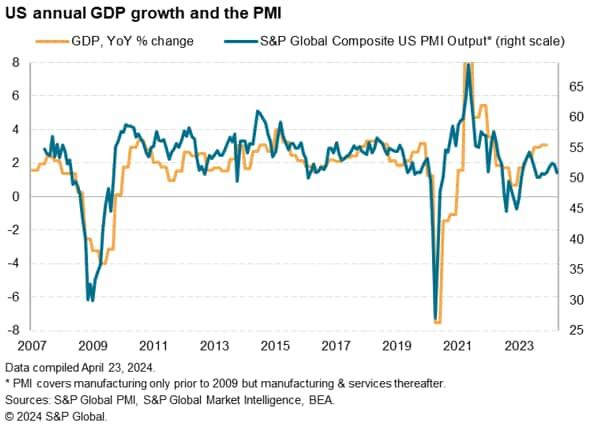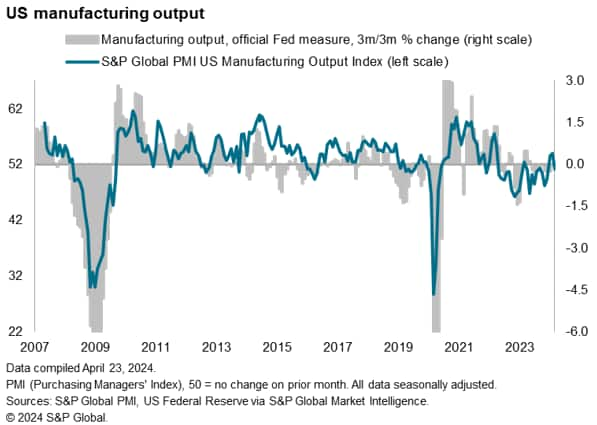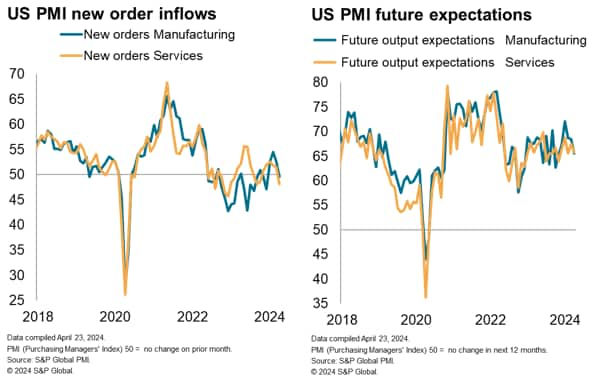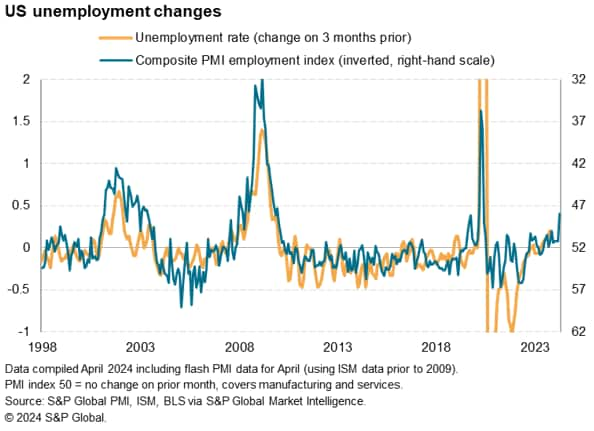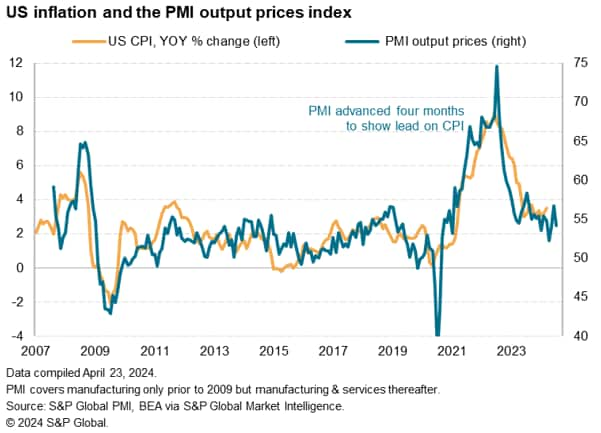The US economic upturn lost momentum at the start of the second
quarter, with the flash PMI survey respondents reporting
below-trend business activity growth in April. Further pace may be
lost in the coming months, as April saw inflows of new business
fall for the first time in six months and firms’ future output
expectations slipped to a five-month low amid heightened concern
about the outlook.
The more challenging business environment prompted companies to
cut payroll numbers at a rate not seen since the global financial
crisis if the early pandemic lockdown months are excluded.
The deterioration of demand and cooling of the labor market fed
through to lower price pressures, as April saw a welcome easing in
rates of increase for selling prices for both goods and
services.
The cooling pace of output growth plus fresh falls in new orders
and employment points to downside GDP risks for the second quarter.
Together with the weaker price pressures evident in April, the
flash PMI data therefore help keep alive expectations that the FOMC
may be able to deliver two rate cuts in 2024.
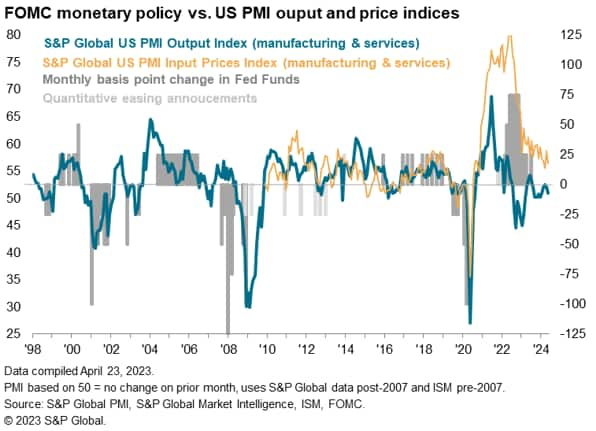
Growth slows at start of second quarter
The headline S&P Global Flash US PMI Composite Output Index
dropped to 50.9 in April from 52.1 in March. Although continuing to
signal an increase in business activity for fifteenth successive
month, the latest data indicated the slowest growth since December.
The data are historically consistent with annual GDP growth falling
below 2%.
Slower increases in activity were recorded across both the
manufacturing and services sectors, with rates of growth easing to
three- and five-month lows respectively.
Weaker leading indicators
Output growth cooled in line with demand weakness as new orders
decreased for the first time in six months, albeit dropping only
modestly. Falling new business was signalled among manufacturers
and service providers alike.
Some service providers suggested that elevated interest rates
and high prices had restricted demand during the month. Meanwhile,
manufacturers often linked lower new orders to inflationary
pressures, weak demand and sufficient stock holdings at
customers.
Concerns about their ability to secure new orders dampened
firms’ confidence in the year-ahead outlook for business activity
in April. Business sentiment dipped to a five-month low, down in
both manufacturing and services.
Employment hit by caution
Signs of demand weakness impacted hiring plans, causing
employment to fall at the strongest pace since June 2020.
The overall reduction in workforce numbers was centered on
services, where employment decreased solidly and to the largest
extent since mid-2020. In fact, excluding the opening wave of the
COVID-19 pandemic, the decline in services staffing levels in April
was the most pronounced since the end of 2009. In contrast,
manufacturing employment continued to increase modestly.
It remains to be seen if the job market weakness seen in April
is a one-off or if it persists into the coming month, as any such
deterioration is likely to feed through to higher unemployment and
lower pay growth.
Inflation pressures fall back after March
rise
Average prices charged for goods and services increased at a
slower rate during April, the pace of inflation cooling again
having accelerated to a ten-month high in March. Prices charged
inflation was in line with the series long-run average, though
still elevated by pre-pandemic standards to hint at consumer price
inflation running moderately above the Fed’s 2% target.
Notably, the drivers of inflation have changed. Manufacturing
has now registered the steeper rate of price increases in three of
the past four months, with factory cost pressures intensifying in
April amid higher raw material and fuel prices, contrasting with
the wage-related services-led price pressures seen throughout much
of 2023. These factory-led price pressures will arguably be of less
concern to policymakers than wage-related price hikes, as the
latter pose greater risks of engrained wage-price spirals
developing.
Access the full press release
here.
Chris Williamson, Chief Business Economist, S&P
Global Market Intelligence
Tel: +44 207 260 2329
© 2024, S&P Global. All rights reserved. Reproduction in whole
or in part without permission is prohibited.
Purchasing Managers’ Index™ (PMI®) data are compiled by S&P Global for more than 40 economies worldwide. The monthly data are derived from surveys of senior executives at private sector companies, and are available only via subscription. The PMI dataset features a headline number, which indicates the overall health of an economy, and sub-indices, which provide insights into other key economic drivers such as GDP, inflation, exports, capacity utilization, employment and inventories. The PMI data are used by financial and corporate professionals to better understand where economies and markets are headed, and to uncover opportunities.
This article was published by S&P Global Market Intelligence and not by S&P Global Ratings, which is a separately managed division of S&P Global.
